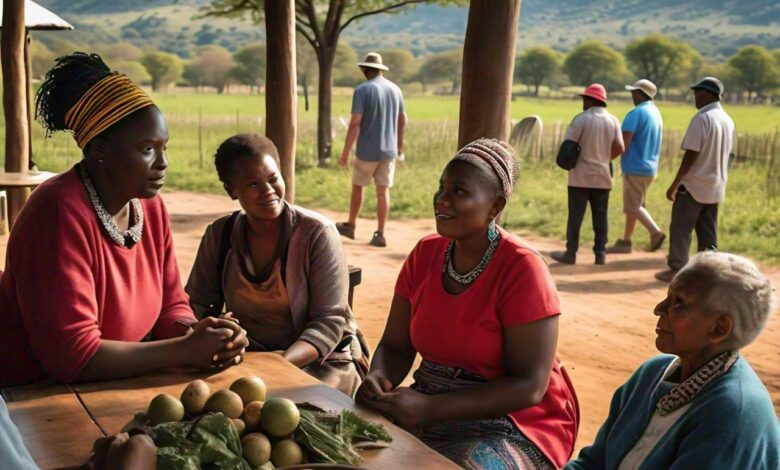Zimbabwe’s Community-Based Tourism: Empowering Local Communities

Community-based tourism initiatives are gaining momentum worldwide, and Zimbabwe is no exception. These innovative approaches to travel are not only transforming the tourism industry but also empowering local communities across the country. Let’s explore how Zimbabwe’s community-based tourism is making a significant impact on rural development and cultural preservation.
The Rise of Community-Based Tourism in Zimbabwe
Community-based tourism (CBT) refers to tourism activities that are owned, managed and operated by local communities. This approach differs significantly from traditional tourism models, where large corporations typically control the majority of tourist experiences. In Zimbabwe, CBT initiatives are under implementation in various regions, particularly in rural areas where economic opportunities are scarce.
According to recent statistics, the number of CBT projects in Zimbabwe has grown by over 50% in the past five years alone. This surge in popularity is largely due to the government’s efforts to promote sustainable tourism practices and support local economic development.
Benefits for Local Communities
One of the primary advantages of CBT is its ability to distribute income more equitably among local residents. Unlike traditional tourism models where profits often flow primarily to foreign investors, CBT ensures that a larger portion of revenue stays within the community.
Studies have shown that CBT initiatives can increase household incomes in rural areas. This significant boost in income helps alleviate poverty and improves living standards for local residents.
Moreover, CBT projects often focus on preserving traditional cultural practices and promoting local heritage. By allowing tourists to experience authentic Zimbabwean culture firsthand, these initiatives contribute to the preservation of cultural diversity and promote cross-cultural understanding.
Challenges Facing Community-Based Tourism
Despite its numerous benefits, CBT faces several challenges in Zimbabwe. One of the primary obstacles is infrastructure development. Many rural communities lack proper roads, electricity and water supply systems. Therefore, this makes it difficult to establish and maintain tourism facilities.
Another challenge is the need for capacity building among local communities. Many community members lack the necessary skills to manage tourism operations effectively. Hence, this can also lead to poor service quality and customer dissatisfaction.
Additionally, there are concerns about the environmental impact of increased tourist activity in sensitive ecosystems. While many CBT projects prioritise sustainability, some worry that unchecked growth could lead to degradation of natural habitats.
Successful Examples of Community-Based Tourism in Zimbabwe
Several successful CBT initiatives have emerged across Zimbabwe, showcasing the potential of this approach to empower local communities.
One notable example is the Matobo Hills CBT project, located in southern Zimbabwe. This initiative allows visitors to stay in traditional huts and participate in local activities such as rock art tours and wildlife tracking.
Furthermore, the project is particularly successful in creating jobs for local women, who now serve as guides and hosts for international tourists. According to project managers, over 70% of the workforce consists of female community members, contributing to gender empowerment efforts.
Another innovative CBT project is the Hwange National Park-based elephant sanctuary. This unique initiative allows tourists to interact with rescued elephants under the guidance of trained local staff.
Moreover, the sanctuary is a major draw for eco-conscious travellers. It is also creating employment opportunities for local villagers who were previously involved in poaching activities.
Government Support for Community-Based Tourism
The Zimbabwean government recognises the potential of CBT to drive economic development. Therefore, it has implemented various policies to support these initiatives.
In 2017, the now Ministry of Tourism and Hospitality Industry launched the Community Based Tourism Policy Framework. This comprehensive document outlines guidelines for establishing and managing CBT projects throughout the country.
The policy emphasises the importance of community participation in decision-making processes and ensures that a fair share of profits goes directly to local communities.
Furthermore, a Community-Based Tourism Fund, which provides financial assistance to CBT projects that demonstrate strong potential for sustainable development is ideal. This will help community members take part in sustainable tourism projects and improve their livelihoods.
Conclusion
Zimbabwe’s Community-based tourism initiatives represent a promising approach to empowering local communities through sustainable tourism practices. As the industry continues to grow, it is crucial that both policymakers and local communities work together to address ongoing challenges and maximise the benefits of CBT.
By supporting these initiatives, travellers can play a vital role in promoting cultural preservation, economic development and environmental conservation in rural Zimbabwe. As the world becomes increasingly aware of the importance of responsible travel, Zimbabwe’s community-based tourism sector is poised to become a model for sustainable tourism practices globally.




